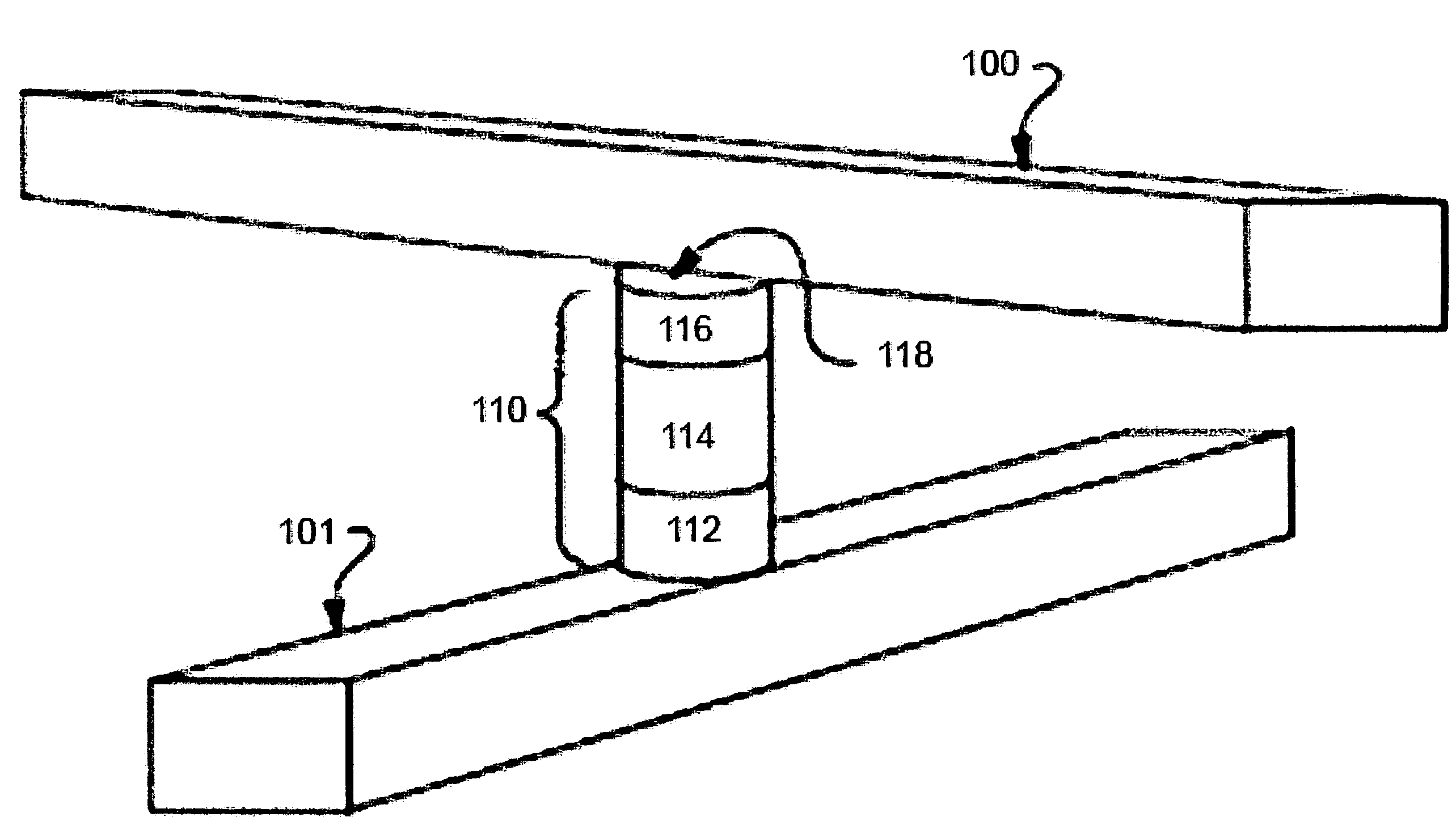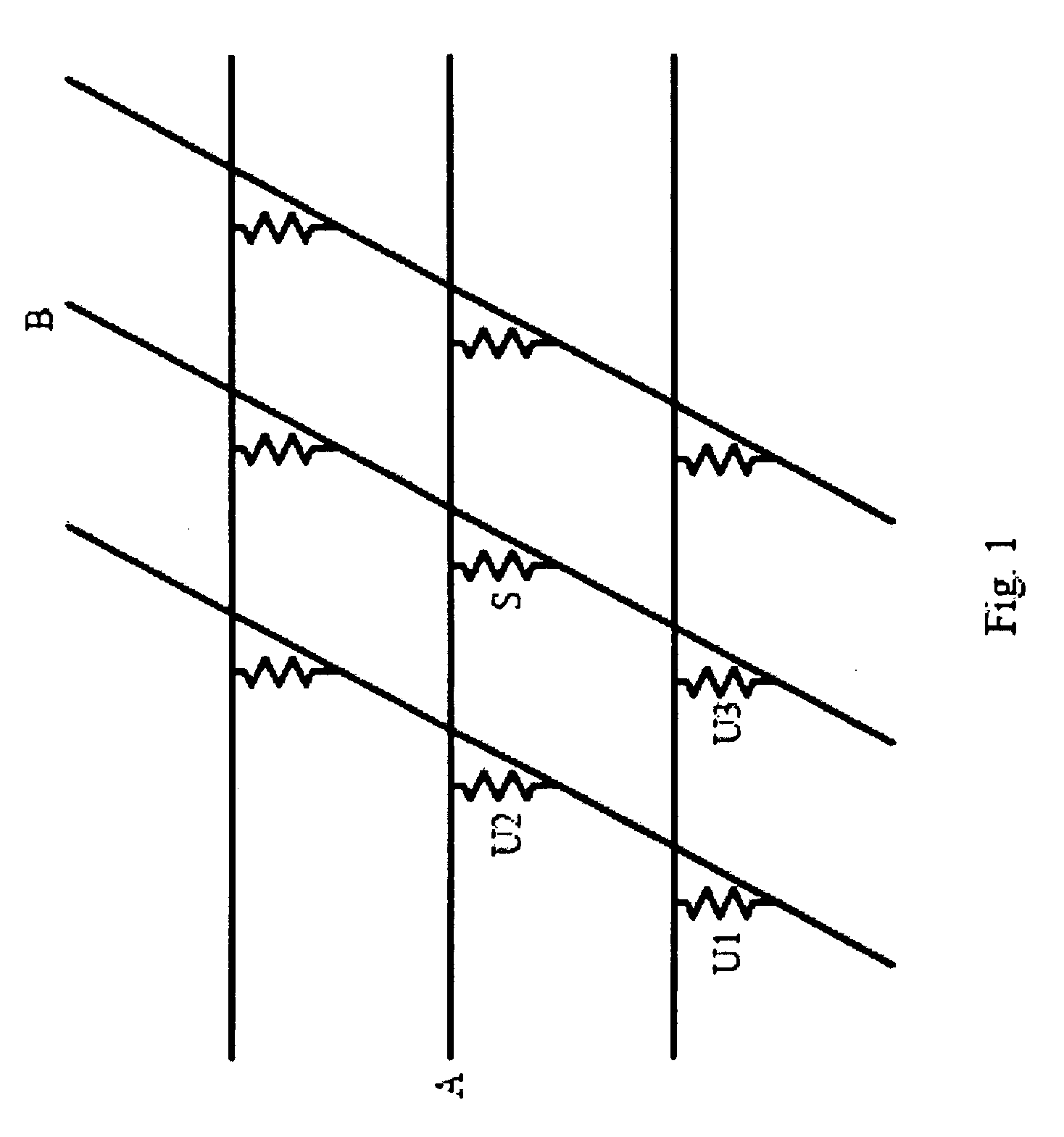Large capacity one-time programmable memory cell using metal oxides
a one-time programmable, memory cell technology, applied in static storage, digital storage, instruments, etc., can solve the problems of difficult fabrication and operation of three-terminal devices, complex solutions for achieving erasable or multi-state cells, and difficult work of chalcogenides
- Summary
- Abstract
- Description
- Claims
- Application Information
AI Technical Summary
Benefits of technology
Problems solved by technology
Method used
Image
Examples
Embodiment Construction
[0007]On embodiment of the invention provides a method of programming a nonvolatile memory device, comprising (i) providing a nonvolatile memory cell comprising a diode in series with at least one metal oxide, (ii) applying a first forward bias to change a resistivity state of the metal oxide from a first state to a second state; (iii) applying a second forward bias to change a resistivity state of the metal oxide from a second state to a third state; and (iv) applying a third forward bias to change a resistivity state of the metal oxide from a third state to a fourth state. The fourth resistivity state is higher than the third resistivity state, the third resistivity state is lower than the second resistivity state, and the second resistivity state is lower than the first resistivity state.
BRIEF DESCRIPTION OF THE DRAWINGS
[0008]FIG. 1 is a circuit diagram illustrating the need for electrical isolation between memory cells in a memory array.
[0009]FIG. 2 is a perspective view of a me...
PUM
 Login to View More
Login to View More Abstract
Description
Claims
Application Information
 Login to View More
Login to View More - R&D
- Intellectual Property
- Life Sciences
- Materials
- Tech Scout
- Unparalleled Data Quality
- Higher Quality Content
- 60% Fewer Hallucinations
Browse by: Latest US Patents, China's latest patents, Technical Efficacy Thesaurus, Application Domain, Technology Topic, Popular Technical Reports.
© 2025 PatSnap. All rights reserved.Legal|Privacy policy|Modern Slavery Act Transparency Statement|Sitemap|About US| Contact US: help@patsnap.com



